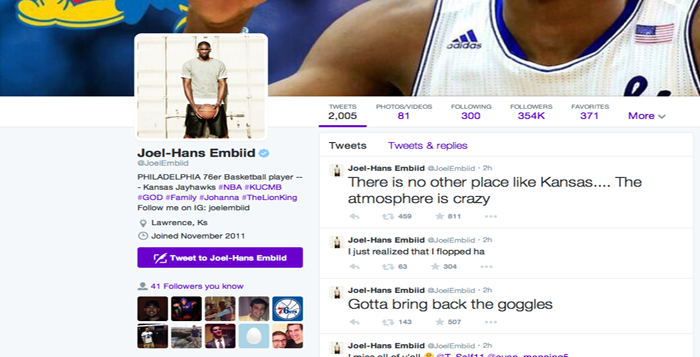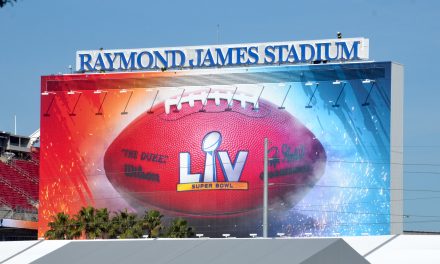“What are we angry about today?”
The New York Times recently quoted this Twitter joke in an article entitled “Clicking Their Way to Outrage: On Social Media, Some are Susceptible to Internet Outrage.” The article describes how one misstep can be magnified into a large problem because anonymous outrage takes on a mob mentality. The article also describes how, on social media, people feel comfortable voicing their anger behind their screens on new topics, seemingly every day.
The article begs a couple of questions. How much of the indignation is sincere? How much of the outrage is correctly directed; that is, where is the outrage to problems that persist, rather than to problems that only recently arose?
One thing is clear: internet outrage has accomplished a lot of good, especially in the sports world. When the public got its hands on Los Angeles Clippers owner Donald Sterling’s racist remarks regarding black fans and basketball, Twitter and Facebook turned into a raging frenzy of people offended by these statements. They were quick to suggest ways to correct the situation. The outrage naturally built pressure on National Basketball Association (NBA) Commissioner Adam Silver to act with a strong arm and to do so quickly. Sure enough, Silver delivered a lifetime ban on Sterling from the league and forced him to sell his team.
While the tape was vile and the NBA’s response was justified, let’s not forget why this situation played out the way it did – social media provided an outlet for fans to pressure the league in a way that has little precedent.
How do we know that social media has changed sports forever? Consider that Sterling was a known entity before this incident. While showing a timeline of Sterling’s legal issues, NBC Los Angeles details how, in 2003, Sterling was sued for “numerous discriminatory statements and housing practices,” or, in other words, refusing to rent out the properties he owns to African Americans. Elgin Baylor, a former player on the Los Angeles Clippers, claimed in 2009 that Sterling wanted a “Southern plantation type structure” for the Clippers.
Imagine if Sterling had made those comments in the world we live in right now.
Had social media been around when these events occurred, Sterling would have been run out the door long ago. The advent of social media in the last five years has caused a distinct shift in how we deal with our outrage. Before social media, the fans and the public had little capability to affect change in the way things were administered. Now, fans have immense power to serve as the check-and-balance system for the leagues.
Another example of how social media has changed sports justice is recently with Minnesota Vikings’ star running back Adrian Peterson. Peterson was placed on the com- missioners’ exempt list after being arrested for beating his child with a switch. Peterson is not the only NFL player to have committed domestic abuse, but the NFL has only recently begun to change its punishments for such cases.
Before social media, the NFL seemed content to let the legal process play out so they could avoid laying down the punishment themselves. After social media grew into a fury and sponsors began to question their relationship with the NFL, the NFL finally stepped in and practically suspended Peterson indefinitely.
However, how can we distinguish between true, justified outrage and mob mentalities? In the case of Sterling, the indignation was undoubtedly justified and achieved a greater good by pushing Sterling out of the league in which he had no place anymore.
The backlash against Roger Goodell and the Baltimore Ravens with regard to their handling of the Ray Rice domestic abuse scandal was also justified. It is clear that social media played a large part in getting the league to change its policies regarding domestic abuse – raising the suspension from two to six games (arguably still not enough). Additionally, Rice was suspended indefinitely from the league.
Conversely, there are issues that have been around for a long time, but ironically the outrage towards them is so ephemeral that it is unclear whether it is earnest in nature. For example, one fact that was tossed around during the Sterling scandal was the fact that only one owner in the entire league was black: Michael Jordan. How could the league justify a system in which the majority of its employees (the players) are black, while the over- whelming majority of its owners are white?
Disapproval over this may not be as serious or necessary as the Sterling or Rice issues, but it is still curious how the public attaches itself to new issues for prolonged periods and pays less attention to enduring ones.
Many women have had difficulty reconciling their fandom with football when so many football players, oftentimes fan favorites, abuse their girlfriends and their wives. The NBA has encountered a little public back- lash regarding the lack of women coaches: there is exactly one woman coach in the league, former Women’s National Basketball Association (WNBA) star Becky Hammon, who is an assistant coach for the San Antonio Spurs.
These issues are sometimes confronted, but more often, they are replaced or just ignored. In this regard, the transient makeup of this outrage is similar to the nature of social media; 140-character tweets are quickly digested, regurgitated in a way to maximize retweets, and then usually forgotten. In some cases, like with Sterling or Rice, the mass of tweets makes it impossible for their respective leagues to ignore the issues.
The bottom line of these collections of upset and angry fans, is that whether or not the outrage is misplaced or full of gaps, it is clearly preferable to have outrage that gets things done than the alternative. When the outrage is directed in a constructive way, it has immense influence over policies and gives fans measurable power over the sports that they pay to watch and love so much. If social media is powering this movement towards greater justice in the sports world, one can hope that the tweeters of the world continue to use their influence for good.
– By Ethan Morris, Staff Writer
The Emory Wheel was founded in 1919 and is currently the only independent, student-run newspaper of Emory University. The Wheel publishes weekly on Wednesdays during the academic year, except during University holidays and scheduled publication intermissions.
The Wheel is financially and editorially independent from the University. All of its content is generated by the Wheel’s more than 100 student staff members and contributing writers, and its printing costs are covered by profits from self-generated advertising sales.






